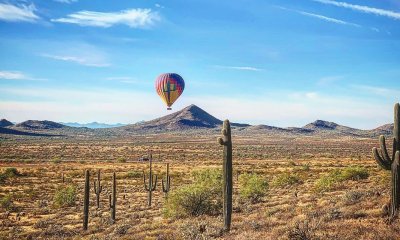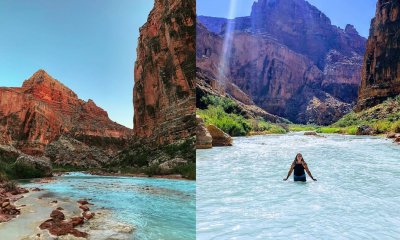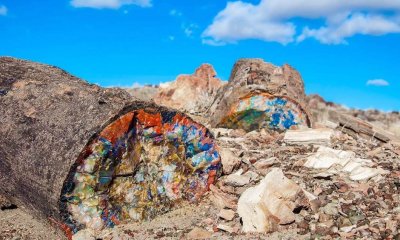Arizona
Take a Photography Road Trip at 8 Must-Visit Spots in Arizona
Prepare your lenses and say goodbye to mundane backdrops because we’re starting in Phoenix and taking you through 8 of Arizona’s unfairly beautiful locations. This road trip is for those brave enough to handle the overwhelming beauty of the Grand Canyon State, one snapshot at a time.
8. A Cactus Wonderland You’ll Never Want to Leave
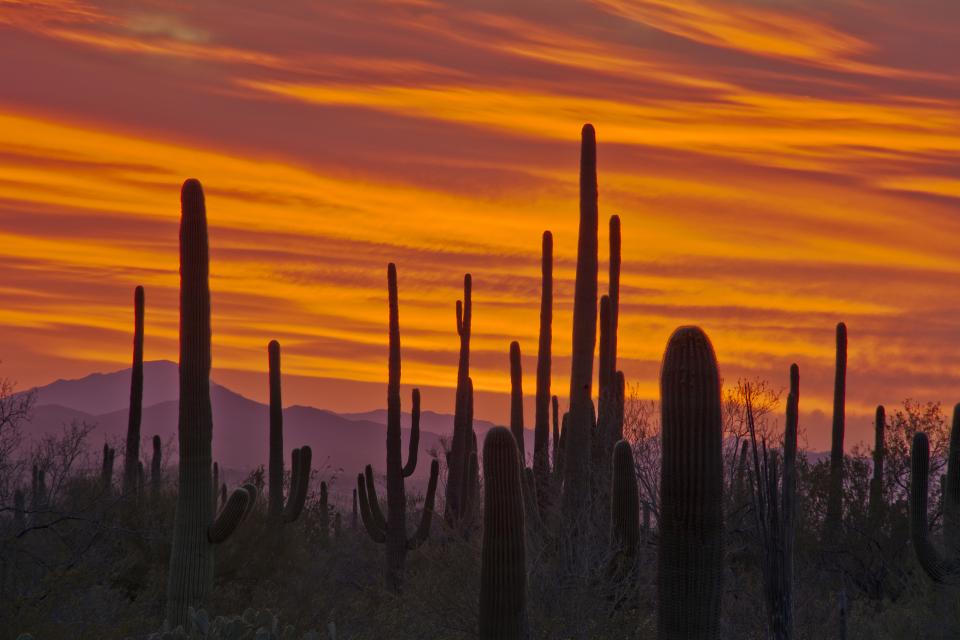
Credit: Michel Heresen
Just when you thought deserts were all about sand, Saguaro National Park throws a forest of giant cacti at you. Located a mere 2 hours from Phoenix, this park challenges you to capture its towering saguaros without getting pricked. The spring bloom? Forget about it – the beauty is too much to handle with colors so vibrant, they’ll make your camera weep.
Capture This: Wide-angle shots are your friend here unless you fancy getting up close and personal with a cactus. Sunrise and sunset turn the park into a silhouette masterpiece, with skies so dramatic, you’ll start questioning your own existence.
Distance and Direction: About 115 miles southeast of Phoenix. A straightforward drive, but the beauty is anything but simple.
Gear Up: A polarizing filter to make those blues and greens pop, and maybe a step ladder – because how else are you going to fit those towering saguaros into your frame?
7. Where Nature’s Artistry Is Just Showing Off
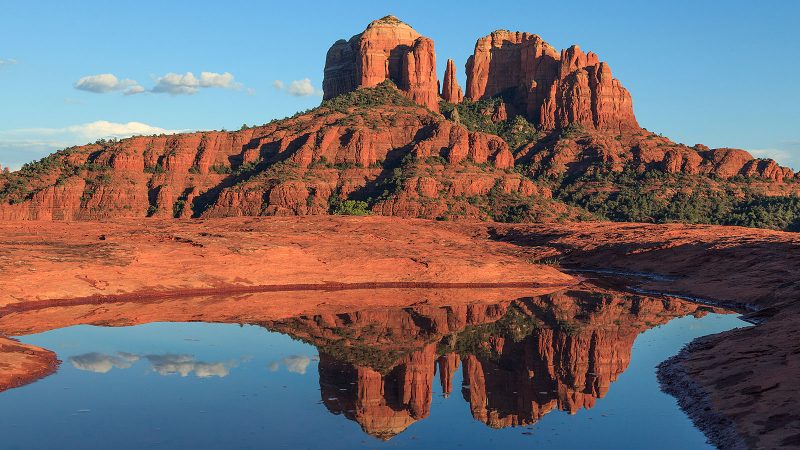
Credit: Sarah Cribari
Next Up, Sedona. Imagine rocks so red and skies so blue that your camera starts questioning its color balance settings. Sedona is about 2 hours north of Phoenix, and it’s where nature decided to show off its artistry with a palette of reds, oranges, and pinks that could make even the most seasoned photographers blush.
Snapshot Challenge: The red rocks at golden hour are not just a photo op; they’re a test of your ability to capture their fiery glow without thinking you’ve landed on Mars. And let’s not even get started on the vortices – swirling centers of energy that might just recharge your batteries better than your actual charger.
Miles and Minutes: Roughly 116 miles from Phoenix, but who’s counting when every mile is filled with scenic views demanding yet another photo stop?
Pack This: A tripod for those long exposures at sunrise or sunset and a wide-angle lens to capture the vastness of the landscape. And maybe an extra memory card, because good luck trying not to take a photo every five seconds.
6. Too Grand For Any Camera
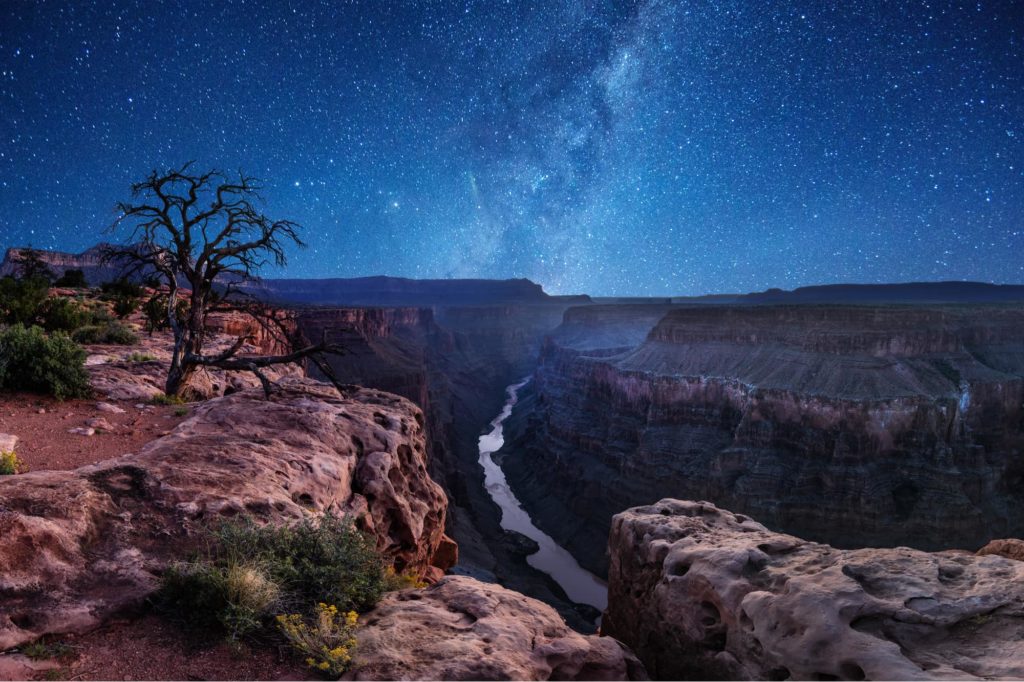
Credit: Kevin Johnson
Just when you thought Arizona had shown you its best, the Grand Canyon steps in, saying, “Hold my beer.” About 3.5 hours north of Phoenix, this natural wonder stretches so wide and deep, it makes every other landscape look like child’s play.
Photo Ops Galore: Trying to fit the Grand Canyon into your viewfinder is like trying to download the internet; it’s vast, overwhelming, and a challenge you’ll gladly accept. Sunrise and sunset transform it into a dynamic canvas of shadows and light, offering scenes so grand, your camera might need a pep talk.
Journey Details: Approximately 230 miles from Phoenix. The drive itself is a buildup to the grand finale, with each mile promising the sight of a lifetime.
Must-Have Gear: A wide-angle lens is non-negotiable, and a good zoom lens will capture those intricate canyon details. And seriously, don’t forget your tripod; the canyon’s majesty at golden hour is not to be missed.
5.The Curve That’s Too Cool for School
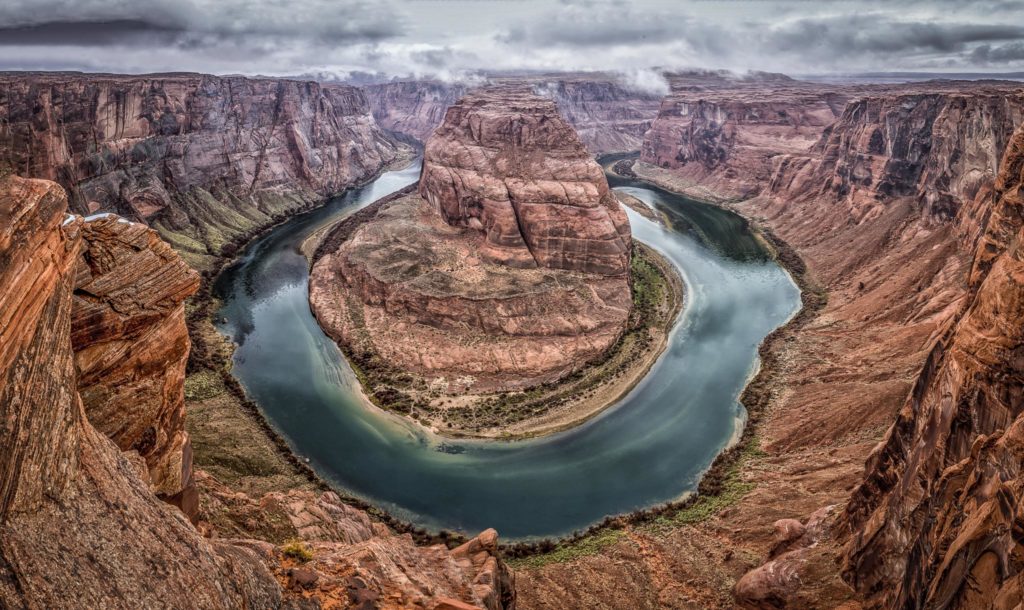
Credit: Andy Luten
Just when you thought you’d seen all the bends and curves Arizona could throw at you, Horseshoe Bend near Page makes a grand entrance. About 140 miles from the Grand Canyon, this dramatic curve of the Colorado River, encased by towering rock walls, is like nature’s own amphitheater, but with way better acoustics.
Why Your Camera Might Get Jealous: The view from the high vantage points for capturing the river’s dramatic curve against the desert backdrop is so breathtaking, your camera might get a little jealous of your own eyes. Best photographed in the late afternoon when the light perfectly kisses the river, creating a spectacle that’s just unfair to other landscapes.
Getting There Is Half the Fun: Approximately 140 miles, 2.5 hours by car from the Grand Canyon. The journey itself is a photographer’s dream, with each turn in the road offering new vistas begging to be photographed.
Pro Tip: Bring a wide-angle lens to capture the entirety of the bend and a polarizing filter to cut through the glare on the water, giving you that crystal-clear shot. And maybe a snack – because let’s face it, you’re going to be here a while trying to capture that perfect shot.
4.Where Light Meets Canyon Magic
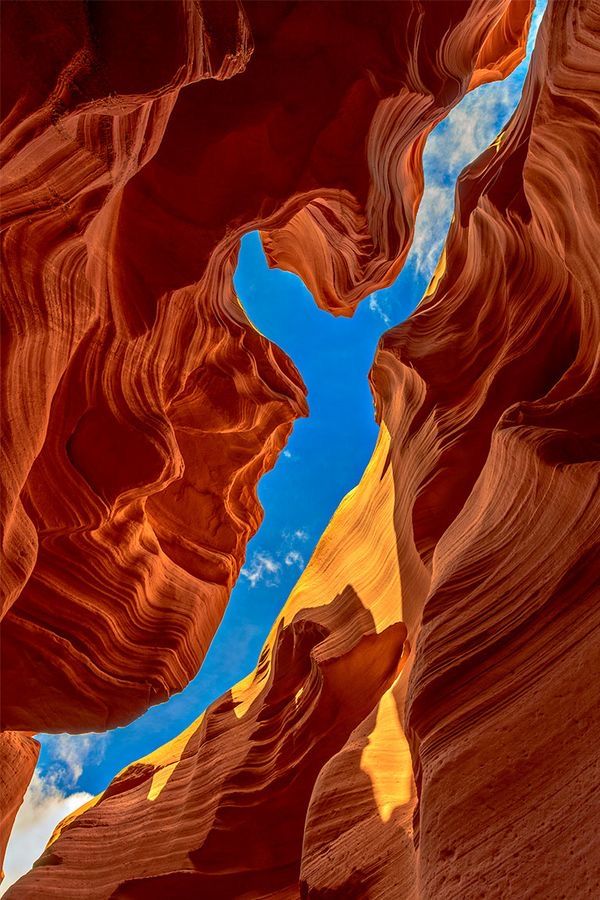
Credit: Pinterest
Just outside of Page, Upper and Lower Antelope Canyon bring a photography wonderland right to you. These narrow, orange-red slot canyons formed by floodwaters carving through sandstone display texture and curves so smooth, light literally dances across them. Guided tours lead you through as beams streaming down from above put on a show capturing the eye better than any theater.
Photo Ops Beyond Belief: Shafts of light slicing through the swirling walls at different times of day transform the canyon into a photography paradise. Long exposures turn the textures and curves into a play of shadows and glow, challenging your creativity.
Tour Times and Details: Located 10 miles from Horseshoe Bend, the canyons can only be accessed on guided tours. Upper Antelope is best photographed around midday when sunlight beams down, while Lower Antelope offers more indirect light.
Gear Up: Sturdy tripods for long exposures are a must, as is a wide angle lens to exaggerate the smooth curves. ND filters allow slower shutter speeds to turn the textures into art.
3.Where Desert Meets Sky in Perfect Harmony
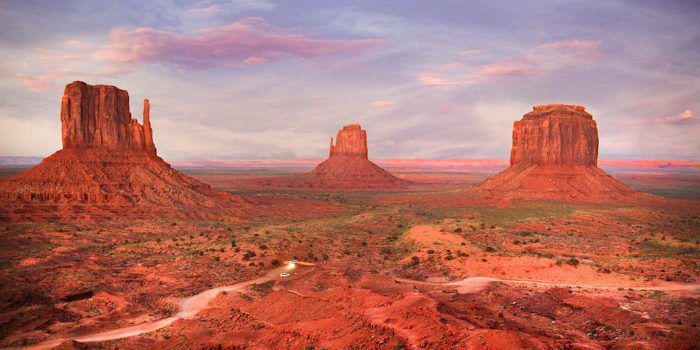
Credit: Pinterest
Situated on the Arizona-Utah border, Monument Valley Navajo Tribal Park presents the iconic backdrop defining the American West. Monumental sandstone buttes, steeples, and mesas rise from the valley floor against skies so unbelievably blue, the contrast hits you like a color explosion.
Shots to Die For: Sunrise and sunset ignite the buttes, lighting them on fire with orange and red hues so intense, you’ll forget to breathe. The interplay of light transforms the landscape into a photography dreamscape begging to be captured from every angle.
Valley Drive Details: Located about 2 hours from Antelope Canyon, the 17-mile scenic drive weaves through the valley, delivering nonstop views. Stop at designated photography points or roam the valleys and lose yourself in the textures and colors.
Camera Must-Haves: All the wide angle lens, ND and polarizing filters you can carry. And a telephoto zoom to highlight intricate rock details. As the buttes blaze at sunset, bracket exposures for post processing magic.
2.Where Ancient History Meets Stunning Vistas
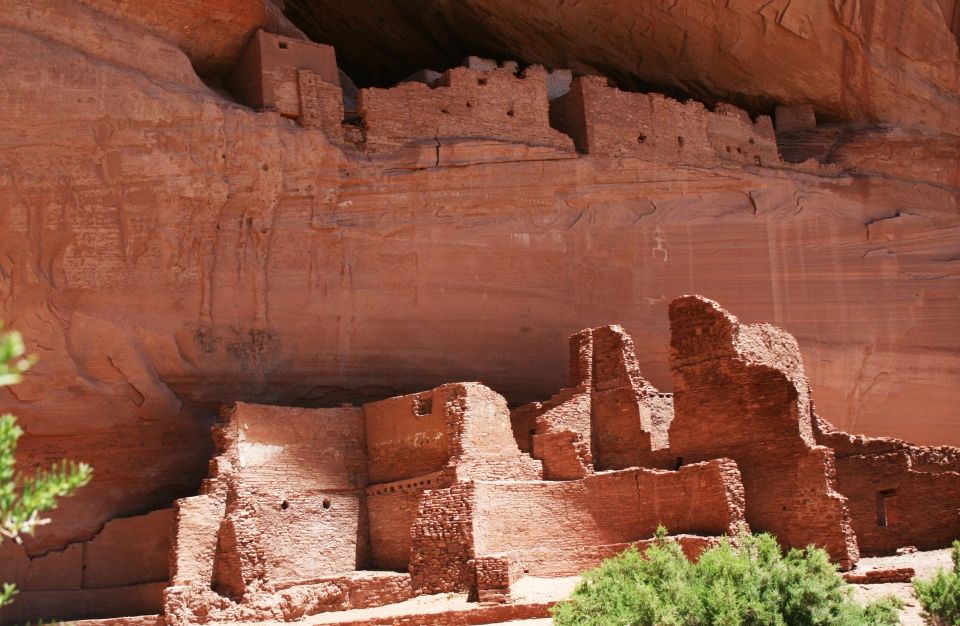
Credit: Pinterest
Offering a gateway into Native American culture and history, Canyon de Chelly National Monument presents sheer red cliffs, towering spires, and ancient dwellings begging to be explored. Located in northeastern Arizona about 2 hours from Monument Valley, this sacred homeland of the Navajo people delivers rugged landscapes from canyon bottom to rim.
Dramatic Views Around Each River Bend: The canyon rises over 1,000 feet, its towering walls and carved edges contrasting with lush green farmland below. Follow the canyon trails to discover ancient cliff dwellings and rock art, perfectly preserved within the protective walls.
See It From Every Angle! Descend into the valley on guided hikes and Jeep tours for an up-close look or take in the sheer scale from dramatic rim viewpoints. Golden hour illuminates the layers of red and orange, presenting countless compositions.
Don’t Forget: Sturdy shoes to navigate canyon trails, wide angle views from the rim, and zoom lenses to highlight intricate details in the rock. And permits for overnight backcountry camping if you want to catch sunrise coloring these ancient lands.
1. A Hidden Oasis Where Waterfalls Steal the Show
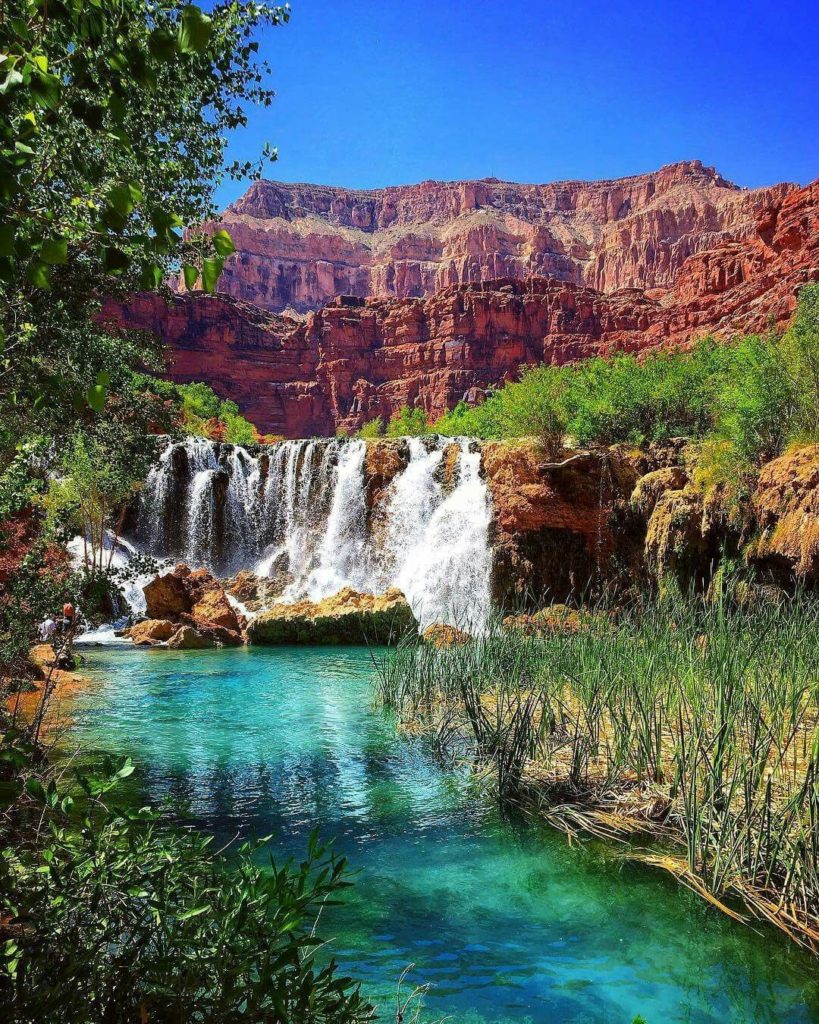
Credit: Pinterest
Saving the best for last, Havasu Falls on the Havasupai Reservation rewards those willing to make the challenging trek with scenes straight out of a fairytale. About 4 hours from Canyon de Chelly, this hidden gem deep within Havasu Canyon features stunning blue-green pools and waterfalls so picturesque, you’ll question if you stumbled into a dreamworld.
Watery Photography Paradise: Bridalveil and Mooney Falls plunge into travertine pools lined with red cliffs, the aquamarine waters so vibrant they seem unreal. But they’re very real, as are the compositions begging to be captured from sunrise to sunset. Play with shutters speeds to show motion.
Access requires permits, planning and navigating 8 miles of canyon trail. But plunge your feet into the crystalline waters beneath thundering falls and you’ll know it was worth it.
Pack Accordingly with Sturdy shoes, plenty of water, wide angle views to capture the falls in context…and napkins to wipe your camera’s drool.
Photography Tips for the Road
Desert Photography: A polarizing filter will help manage reflections and enhance the sky’s blue.
Golden Hours: Just after sunrise and before sunset, these times offer the best natural light.
Lighting for Sunsets: Slightly underexpose your shots to bring out the colors and contrast.
Long Exposure: Essential for capturing smooth water effects and light trails, especially useful at Havasu Falls.
Seasonal Considerations
Best Seasons: Spring for wildflowers and fall for cooler temperatures and stunning foliage.
Monsoon Photography: Offers dramatic skies, but always prioritize safety.
Embark on this photography journey through Arizona, and return with a collection of images that not only capture the state’s physical beauty but also the essence of each location’s spirit. Happy shooting!












